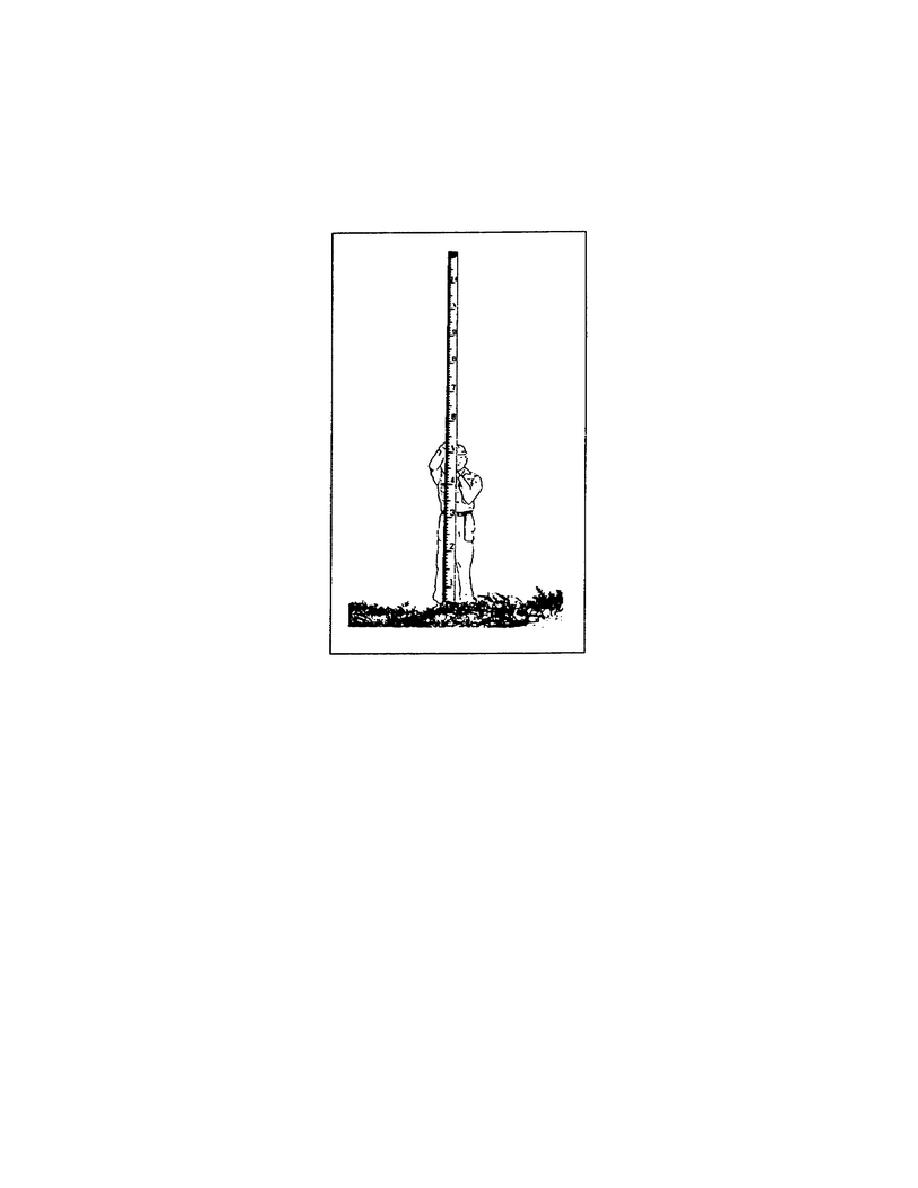
j. Stadia Boards. In determining linear distance by stadia, you observe a stadia rod or stadia
board through a telescope containing stadia hairs and note the size of the interval intercepted by the
hairs. A typical stadia board is shown in Figure 5-22. Note that it is graduated in a manner that
facilitates counting the number of graduations intercepted between the hairs. Each tenth of a foot is
marked by the point of one of the black, saw-toothed graduations. The interval between the point of a
black tooth and the next adjacent white gullet between two black teeth represents 0.05 foot.
Figure 5-22. Stadia boards
k. Adjusting Pins. Surveying instruments are built in such a way that minor adjustments can be
performed in the field without much time loss. The adjustments are made by loosening or tightening the
capstan screws with adjusting pins. These pins are included in the instrument box. They come in
various sizes, depending on the type of instrument and the hole sizes of its capstan screws. To avoid
damage to the head of the capstan screw, use the correct size adjusting pin.
If you lose or break a pin, surveying-equipment dealers will usually replace them free of charge. While
conducting a survey, the adjusting pins should be carried in your pocket. This will save valuable time
when the pins are needed. Do not use wires, nails, screwdrivers, ink pens, or similar pointed items as
substitutes for adjusting pins.
l. Tape Repair Kit. Even though you handle the tape properly and carefully during field
measurements, some tapes still break under unforeseen circumstances. During taping operations in the
field, the surveyor should always be sure to have an extra tape or a tape repair kit with him so that he
5-19
EN0591


 Previous Page
Previous Page
